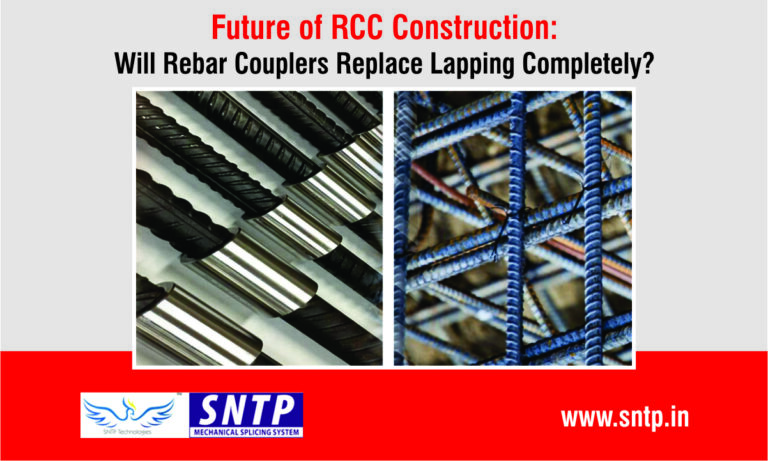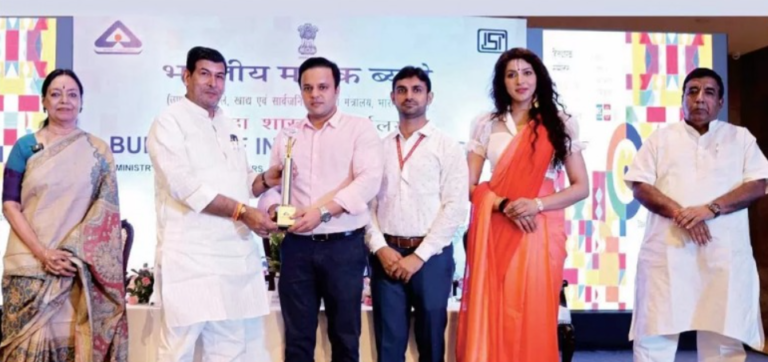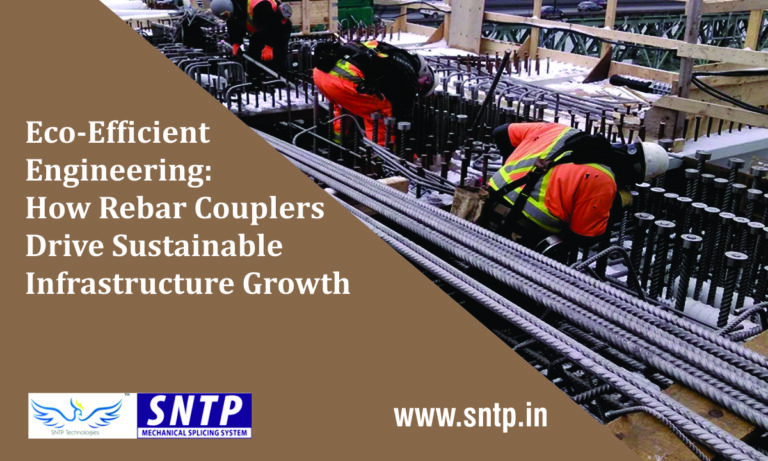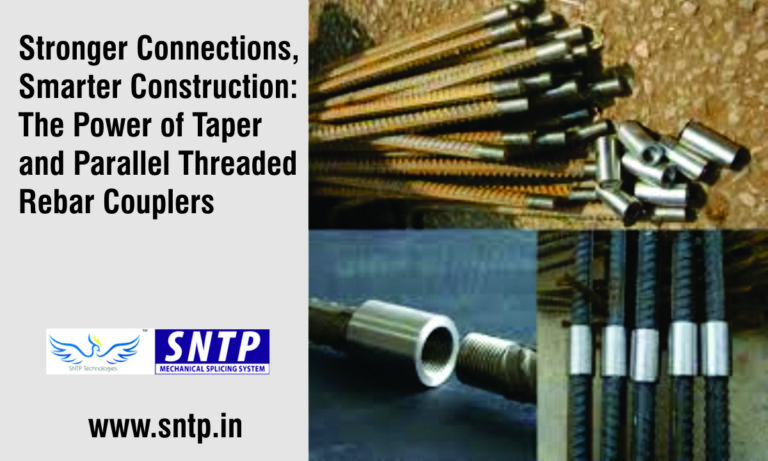+91 9953 65 9594
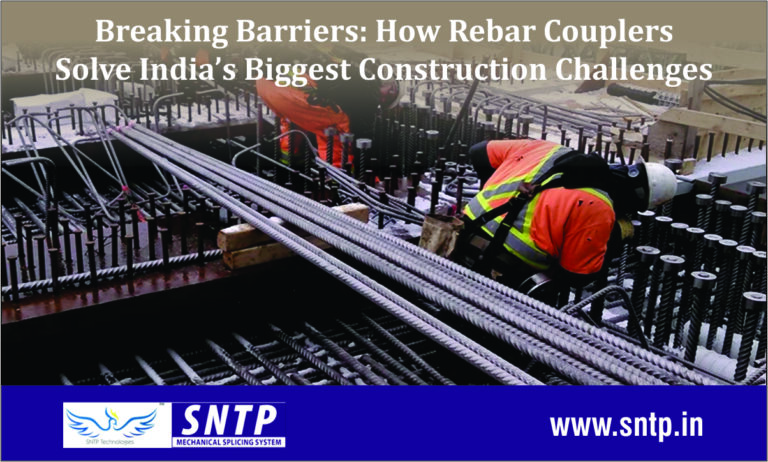
Breaking Barriers: How Rebar Couplers Solve India’s Biggest Construction Challenges
India’s construction industry is one of the fastest-growing in the world, contributing over 9% to the nation’s GDP and employing millions of people. From mega highways and metro corridors to high-rise residential towers and smart city projects, the demand for infrastructure is booming. But alongside this growth come persistent challenges—rising costs, project delays, safety concerns, and sustainability issues.
For decades, traditional methods like lap splicing were used to connect reinforcement bars. However, these methods are proving increasingly inefficient in meeting modern demands. Enter rebar couplers—compact yet powerful connectors that are quietly breaking barriers in Indian construction. They offer stronger joints, faster assembly, lower steel wastage, and seismic resilience, making them one of the most impactful innovations in recent years.
This article explores how rebar couplers address the biggest challenges faced by Indian builders, contractors, and developers.
Challenge 1: Rising Steel Costs and Wastage
Steel is the backbone of construction, and its cost significantly influences project budgets. Lap splicing requires extra bar length for overlaps (up to 40 times the diameter of the bar), leading to enormous wastage. On mega projects like metro rail or expressways, this can mean hundreds of tons of wasted steel, inflating costs unnecessarily.
✅ Rebar Couplers as a Solution
Rebar couplers connect bars end-to-end, eliminating the need for overlaps. This reduces steel consumption by 15–30%, depending on project size. For contractors, this directly translates into cost savings and improved profit margins, while also reducing the project’s carbon footprint.
Challenge 2: Reinforcement Congestion
High-rise buildings, bridges, and flyovers require dense reinforcement, especially in columns, beams, and joints. Overlapping bars create congestion, which restricts concrete flow and compaction. This leads to honeycombing, voids, and reduced durability of structures.
✅ Rebar Couplers as a Solution
Couplers are compact and remove the need for bulky overlaps. They streamline reinforcement zones, allowing better concrete placement. The result? Stronger, more durable structures with improved load-bearing capacity and longer life spans.
Challenge 3: Project Delays
Delays are a chronic problem in Indian construction. Manual tying and overlapping of bars is labor-intensive and time-consuming. Add labor shortages, unpredictable weather, and complex designs, and projects often run months behind schedule. Delays mean higher costs for labor, machinery rentals, and penalties.
✅ Rebar Couplers as a Solution
Rebar couplers are designed for quick and precise installation, requiring less labor and time. With reduced steps, reinforcement activities progress faster. For large-scale infrastructure projects, this can shave off weeks or even months from the timeline, helping developers hand over projects on time or earlier—boosting reputation and profits.
Challenge 4: Seismic Safety in Earthquake-Prone Zones
India lies in a seismically active region, with zones like the Himalayas, Delhi NCR, and the Northeast highly vulnerable. Lap splicing often creates weak points, as overlaps do not guarantee 100% load transfer. During earthquakes, this can lead to catastrophic failures.
✅ Rebar Couplers as a Solution
Seismic-grade rebar couplers are engineered to deliver full bar strength and added ductility. They transfer stress more effectively, ensuring resilience during seismic events. By adopting couplers, builders can meet earthquake-resistant design requirements, safeguarding lives and infrastructure investments.
Challenge 5: Compliance with Standards
Government projects and modern private contracts increasingly require materials that meet BIS (Bureau of Indian Standards) and ISI certifications. Non-compliance leads to delays in approvals, legal disputes, and project rejections.
✅ Rebar Couplers as a Solution
ISI-certified couplers, such as those from SNTP, comply with IS 16172:2014 standards. This ensures builders meet safety and quality benchmarks, making project approvals smoother and faster. Using certified products also enhances a company’s credibility with clients and regulators.
Challenge 6: Rising Labor Costs and Skill Shortages
India faces a shortage of skilled labor in construction. Traditional splicing requires significant manpower and time, increasing dependency on workers. Rising wages only add to the financial burden.
✅ Rebar Couplers as a Solution
Couplers require less labor for installation and reduce reliance on skilled manpower. With easier training and quicker assembly, contractors can control labor costs and reduce project risks.
Challenge 7: Demand for Precast and Modular Construction
India is moving toward precast and modular construction to meet the demand for faster housing and infrastructure delivery. But lap splicing is not suited for joining precast segments.
✅ Rebar Couplers as a Solution
Rebar couplers provide easy, secure connections between precast elements, ensuring structural continuity. Whether in metro rail segments, modular housing, or bridges, couplers enable faster assembly while maintaining strength. This makes them critical to the future of smart city and affordable housing projects.
Challenge 8: Sustainability and Green Building Requirements
With rising awareness about climate change, sustainability is no longer optional. Steel wastage, project delays, and poor quality construction contribute to environmental strain.
✅ Rebar Couplers as a Solution
By reducing steel wastage, cutting down labor needs, and ensuring durable structures, rebar couplers support green building certifications like GRIHA and LEED. They help projects align with India’s eco-friendly construction goals, lowering environmental impact while maintaining profitability.
SNTP – Your Partner in Building Stronger India
At SNTP, we understand the complex challenges Indian builders face. Our rebar couplers are:
- ✅ ISI-certified (IS 16172:2014) for full compliance.
- ✅ Manufactured with precision engineering for zero slippage.
- ✅ Available in multiple variants – standard, position, transition, and seismic.
- ✅ Trusted across metro, highway, real estate, and government projects.
By choosing SNTP, contractors not only solve technical challenges but also ensure higher profit margins, faster delivery, and long-term reliability.
Conclusion
India’s construction sector is at a turning point. Old practices like lap splicing cannot meet the demands of today’s ambitious projects. Builders need solutions that deliver efficiency, strength, compliance, and sustainability—all at once.
Rebar couplers are breaking these barriers. They address India’s biggest construction challenges, from steel wastage and seismic safety to project delays and compliance. For forward-thinking builders, couplers are not just tools but strategic assets that redefine how India builds.
With SNTP’s ISI-certified couplers, the future of Indian construction looks stronger, faster, safer, and more profitable than ever before.
📞 Partner with SNTP today and transform the way you build.
© Copyright 2017.SNTP All Rights Reserved.
Design & Developed By Star Web Maker


